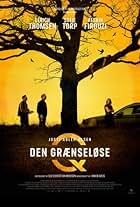The showbiz saying 'always leave them wanting more' has special relevance to movie sequels. The highly acclaimed Swedish film As it is in Heaven (2004) set an Australian record with the longest run of 103 weeks at Sydney's Cremorne Orpheum. It is a funny, heart-warming, musically delightful, and well-directed story about a world-famous conductor who returns to his small village, finds romance, and helps the local amateur choir create beautiful music. The sequel Heaven on Earth (2015) continues the story after an eleven-year intermission. But while the first film left audiences wanting more, the sequel is a case of 'no more please'.
Heaven on Earth begins with the widowed Lena (Frida Hallgren) suddenly giving birth to a daughter in a snowstorm aided by a bumbling alcoholic priest. His church used to be full until his parish deserted him for Lena's robust country music and dance hall concerts. To save his job, she agrees to bring music back to the house of god, re-form the choir, and teach them to sing Handel's Messiah. This narrative arc mimics the 2004 film, with Lena following in the footsteps of her former conductor-lover. But where the original had a clear sense of direction, this film meanders through several diversionary subplots without knowing where it wants to go or what it wants to say. The small-minded idiosyncrasies and hidden secrets of rural village life is a dominant theme for both films. The first was played out with humorous understatement by a cast of funny odd characters, while the second is dominated by over-cooked melodrama: too many males punching and screaming at Lena, too many appearances in her underwear, and too many implausible scenarios that contribute little to what was originally a tightly scripted and authentic story.
An outstanding feature of both films is the superb cinematography. From the filming of a beautiful birth scene, to the wild dance hall scenes, to the wonderful Swedish landscapes, the camera-work is triumphant. While acting performances are generally over-done in this film, Frida Hallgren's performance provides warmth and humour, as well as one of the widest smiles you will find in cinema. But at two hours and 24 minutes this film is far too long to sustain any narrative tension and ultimately fails to reward the viewer for their patience. Where the first film had a truly memorable ending, this one limps home completely exhausted as a tired parody of a once-great idea.


























